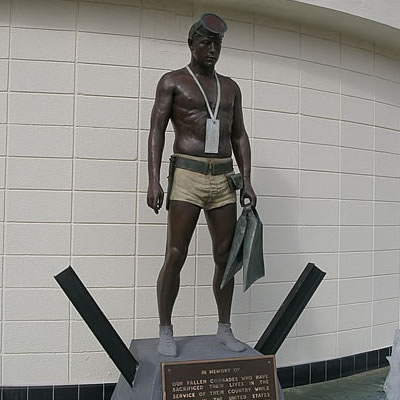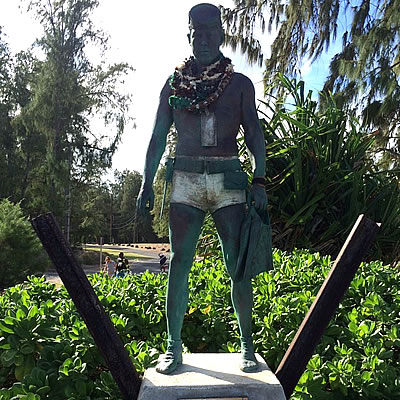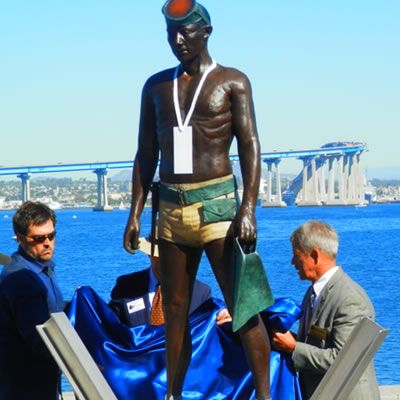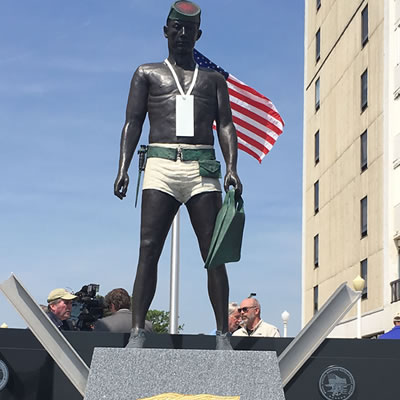
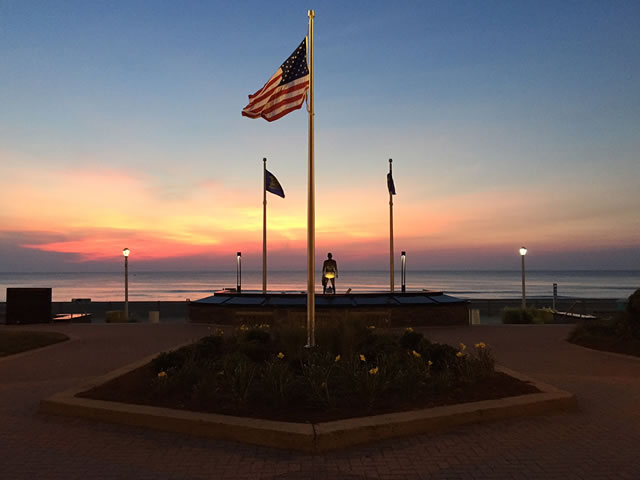
The History of the Naked Warrior
During their early missions, Navy combat swimmers were clothed in combat uniforms, boots, and metal helmets. That changed during a mission in preparation for the invasion of the Japanese-held atoll of Kwajalein in January 1944.
Ordered to conduct a reconnaissance mission to assess beach conditions in advance of the planned assault, the two-man team of Ensign Lewis F. Luehrs and Chief Petty Officer Bill Acheson could not get close enough to shore because of a coral reef. The men stripped to their underwear and swam over the reef to complete the mission undetected, becoming the first “Naked Warriors.” Following the success of that mission, training emphasized strong swimming skills and operating without the use of lifelines, wearing only face masks, swim trunks, and fins.
Nicknamed “Naked Warriors” for their lack of clothing and equipment, these Frogmen swam into enemy waters to reconnoiter heavily-defended beaches without weapons or support, setting explosive charges to destroy underwater obstacles–natural or man-made– that would otherwise impede Allied amphibious landings during World War II.
Honoring the service of these brave forerunners, a bronze statue was commissioned for the Navy SEAL Museum not long after its inception. The statue was created by the famous sculptor John Seward Johnson Atelier (also known as Seward Johnson) and officially unveiled at the Museum on November 12, 1988 in Fort Pierce, Florida. It depicts a typical World War II era combat swimmer without protective clothing or gear. He carries no weapons. He is only armed with tools for a typical mission, including a slate and lead line for recording depth and obstacles, a demolition pack, and a knife for cutting explosive charge primer cords or for escaping from entanglements, such as netting or seaweed. He stands on a “horned scully” (like those preserved at the Museum), which were beach defense devices used extensively during WW II.
Commemorating these elite men of the Navy’s Underwater Demolition Teams, or UDTs, of World War II, the Naked Warrior statue is a testament to the raw bravery and tremendous skills of the Navy combat swimmers who were the predecessors of today’s Navy SEALs.
“It’s easy sometimes to forget the simple things that give us pleasure. If we open our eyes, life is marvelous. The human spirit triumphs, if only for moments in a day. I try to have my work call attention to those moments.”
Seward Johnson died on March 10, 2020 at the age of 89 after a battle with cancer.
Seward Johnson was born in New Jersey April 16, 1930 and subsequently lived in London, Paris, and Bermuda. He graduated from the college preparatory Forman School in Litchfield, Connecticut before attending the University of Maine. Enlisting in the Navy, Johnson spent four years aboard the U.S.S. Gloucester, the only ship hit by enemy fire during the Korean War. Johnson settled in New Jersey to raise a family with his wife and spent his time divided between New York City, Nantucket, and Key West.
Johnson’s earliest artistic efforts were in painting, but as his aesthetic developed, he gravitated more toward sculpture. Having no formal training beyond a series of classes in Cambridge, MA, his first cast work of sculpture won the Award in Steel Art competition which included 7,000 entries. Now famous worldwide for his life-size bronze figurative sculptures, Seward Johnson’s works are exhibited internationally and are included in numerous private collections, museums, and public art collections.
Naked Warrior Heritage Sites
There are four major Navy SEAL historical sites, each with identical Naked Warrior statues as part of a SEAL Monument for the general public. These heritage sites are Fort Pierce, Florida; (Bellows Air Force Station) Oahu, Hawaii; Coronado, California; and Virginia Beach, Virginia. Each Naked Warrior heritage site provides an important tribute to Navy SEALs and their predecessors, while acknowledging their respective locations important part in their remarkable history.
Navy SEAL Challenge: visit all four heritage sites and send us your images at each.

